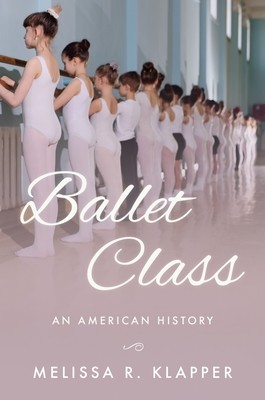
- We will send in 10–14 business days.
- Author: Melissa R Klapper
- Publisher: Oxford University Press, USA
- ISBN-10: 0190908688
- ISBN-13: 9780190908683
- Format: 16.5 x 23.6 x 3.3 cm, hardcover
- Language: English
- SAVE -10% with code: EXTRA
Reviews
Description
Surveying the state of American ballet in a 1913 issue of McClure's Magazine, author Willa Cather reported that few girls expressed any interest in taking ballet class and that those who did were hard-pressed to find anything other than dingy studios and imperious teachers. One hundred years later, ballet is everywhere. There are ballet companies large and small across the United States; ballet is commonly featured in film, television, literature, and on social media; professional ballet dancers are spokespeople for all kinds of products; nail polish companies market colors like "Ballet Slippers" and "Prima Ballerina;" and, most importantly, millions of American children have taken ballet class. Beginning with the arrival of Russian dancers like Anna Pavlova, who first toured the United States on the eve of World War I, Ballet Class: An American History explores the growth of ballet from an ancillary part of nineteenth-century musical theater, opera, and vaudeville to the
quintessential extracurricular activity it is today, pursued by countless children nationwide and an integral part of twentieth-century American childhood across borders of gender, class, race, and sexuality.
EXTRA 10 % discount with code: EXTRA
The promotion ends in 8d.10:59:42
The discount code is valid when purchasing from 10 €. Discounts do not stack.
- Author: Melissa R Klapper
- Publisher: Oxford University Press, USA
- ISBN-10: 0190908688
- ISBN-13: 9780190908683
- Format: 16.5 x 23.6 x 3.3 cm, hardcover
- Language: English English
Surveying the state of American ballet in a 1913 issue of McClure's Magazine, author Willa Cather reported that few girls expressed any interest in taking ballet class and that those who did were hard-pressed to find anything other than dingy studios and imperious teachers. One hundred years later, ballet is everywhere. There are ballet companies large and small across the United States; ballet is commonly featured in film, television, literature, and on social media; professional ballet dancers are spokespeople for all kinds of products; nail polish companies market colors like "Ballet Slippers" and "Prima Ballerina;" and, most importantly, millions of American children have taken ballet class. Beginning with the arrival of Russian dancers like Anna Pavlova, who first toured the United States on the eve of World War I, Ballet Class: An American History explores the growth of ballet from an ancillary part of nineteenth-century musical theater, opera, and vaudeville to the
quintessential extracurricular activity it is today, pursued by countless children nationwide and an integral part of twentieth-century American childhood across borders of gender, class, race, and sexuality.


Reviews